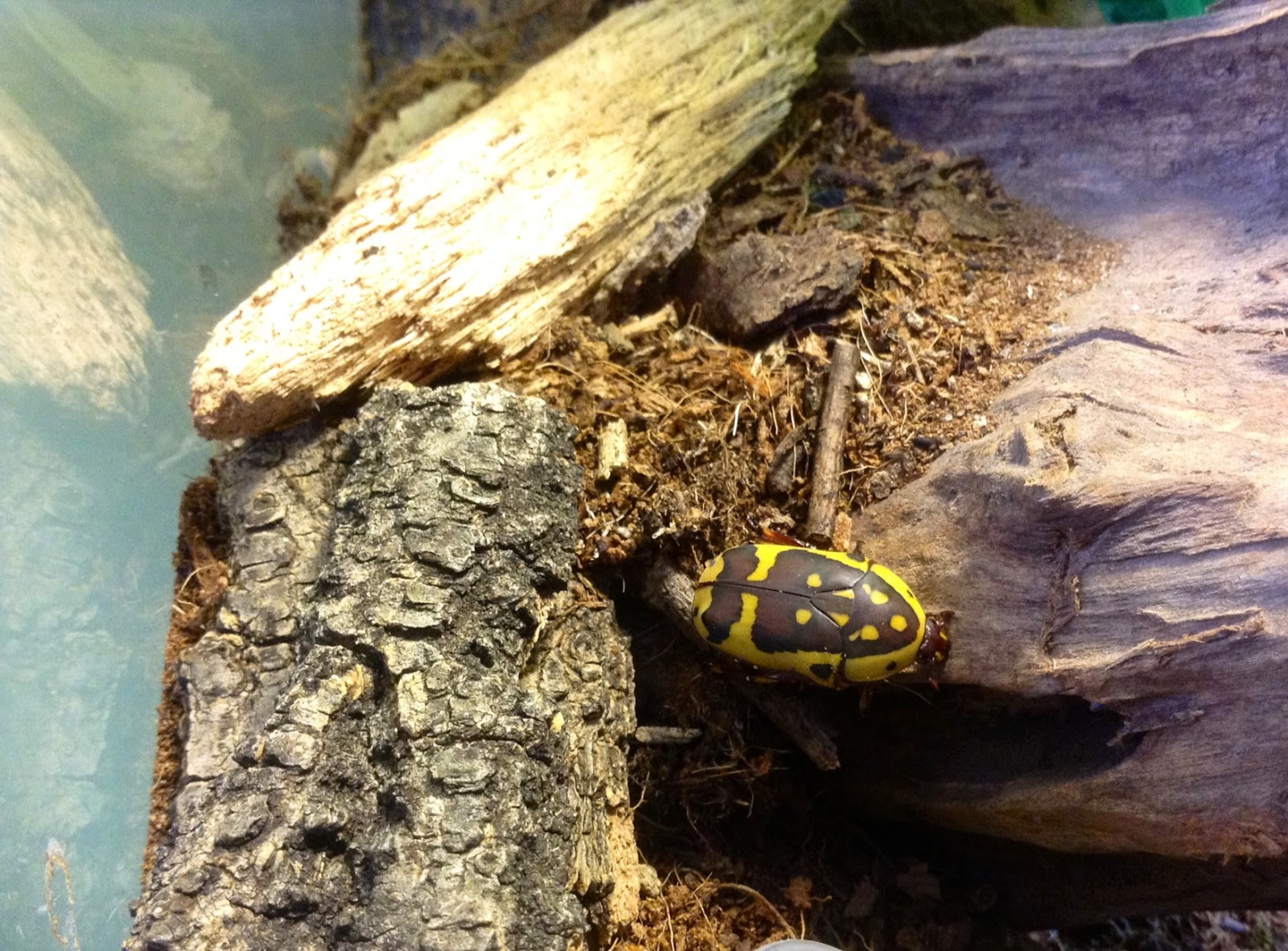The second and third episodes for my series on BBC Radio Humberside (see my previous post, BBC Fun) were recorded on the 2nd of August. These episodes look at Grassland and Woodland habitats.
For Woodland, we went to Burton Bushes, a large expanse of trees next to the better known Beverly Westwood. I had never been to Burton Bushes before, so this was really exciting for me. The wood is made up of a wide selection of trees, but the main ones are Oak and Beech. Purple Hairstreak Butterflies (Neozephyrus quercus) are on the site, but I never saw any of these on my visit.
We saw an Early Thorn moth (Selenia dentaria), a species that can sometimes be seen during the day, hiding amongst the leaf litter.
.jpg)
An Early Thorn moth posing on a piece of wood.
We discovered numerous fungi and lichen species at Burton Bushes, including Small Stagshorn (Calocera cornea), a star species on the site, and also Beefsteak Fungus (Fistulina hepatica). The Beefsteak Fungus really did resemble a piece of beef, and if squashed it exudes a scarlet substance that resembles blood!
Beefsteak Fungus!
.jpg)
Small Stagshorn Fungus on a piece of wood.
We saw numerous beautiful lichen species of all different shapes, shades, and sizes. All the species that can be seen at Burton Bushes are indicators of clean air.
We came across a large Oak tree stump, which had numerous burrows going into it. It seemed likely that the uncommon Yellow-legged Clearwing (Synanthedon vespiformis) was the culprit. The larvae of this species live inside tree stumps, pupate inside the tree stump, then burrow their way out as adults. The adults will then mate and lay their eggs in the tree stump, and the cycle continues.
For Grassland, we moved onto Beverly Westwood, a large expanse of unspoilt Chalk Grassland. This site is grazed by cows, which means that there's quite a few cow pats. Well, I couldn't resist such a great opportunity to have a poke about in one, so I grabbed a stick and started my exploration. Numerous fly (Diptera) species and their larvae could be seen, as well as quite a few Rove Beetles (Staphylinidae). But then we found what we were really looking for: Dung Beetles (Scarabaeinae). We discovered a species that is a pretty typical sort of Dung Beetle, known as Aphodius fossor, a species that can be found on wet dung of cows and horses.
.jpg)
.jpg)
Aphodius fossor explores my cow-pat covered hand.

Exploring cow pats with a stick!
My Dad got quite jealous and found his own stick to poke piles of poo with. It became a bit of a 'Dung War' as I didn't like Dad poking about in my pile of poo!
We also heard a Yellowhammer (Emberiza citrinella) singing its little heart out, which was a complete first for me.
We also found a Meadow Puffball (Vascellum pratense), and in brilliant condition too. They prefer short grass, so places such as golf courses are perfect for them. Unfortunately, due to this habit, they are most often shredded by lawn mowers or stepped on, so discovering one in this condition was quite uncommon.
A Meadow Puffball.
All through my trip to Burton Bushes and Beverly Westwood I was taking little recordings whenever something interesting cropped up.
I had a great time, and I'm really looking forward to hearing the episodes on the radio!
In the meantime, keep on the wild side!
.jpg)
.jpg)






.JPG)